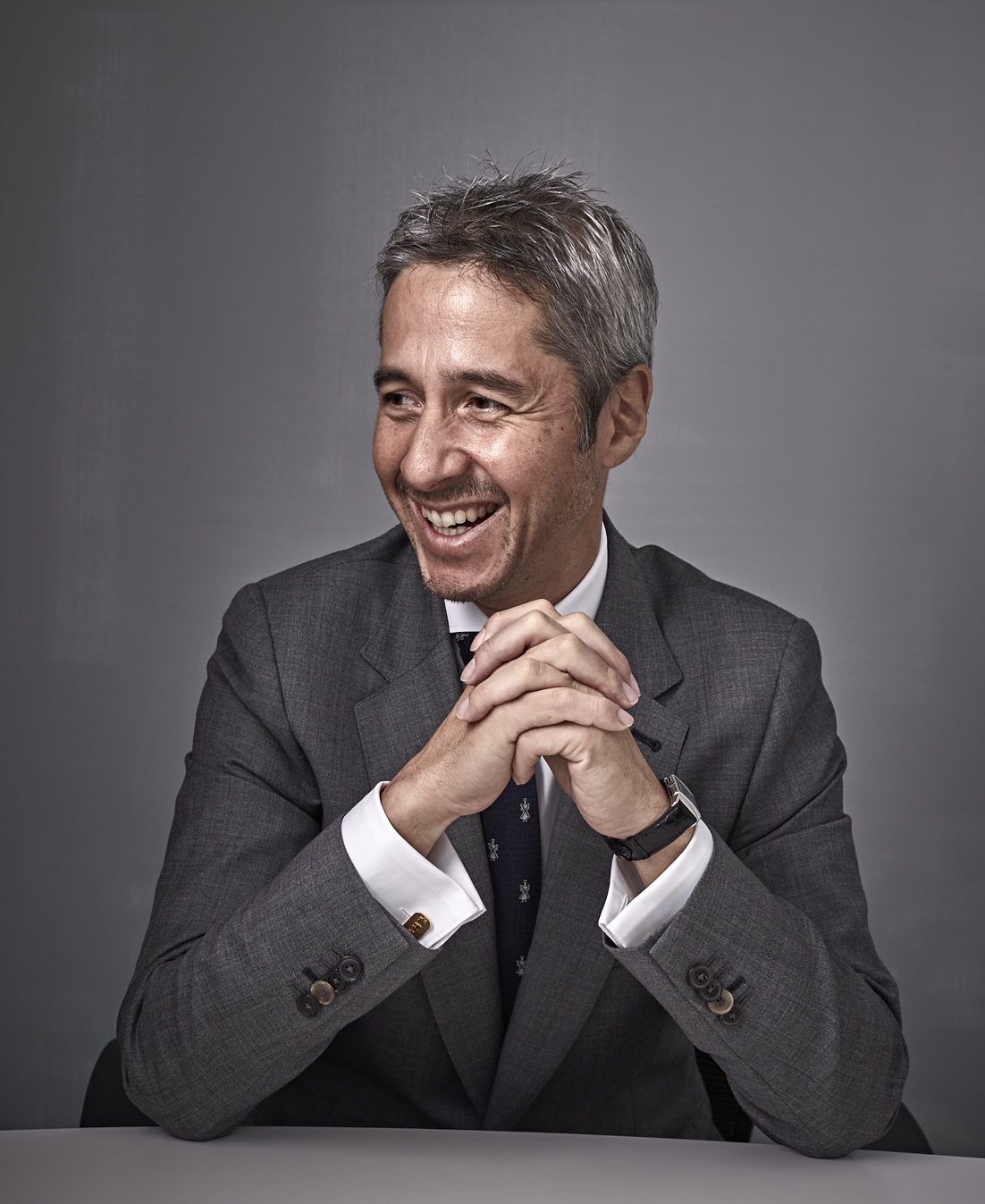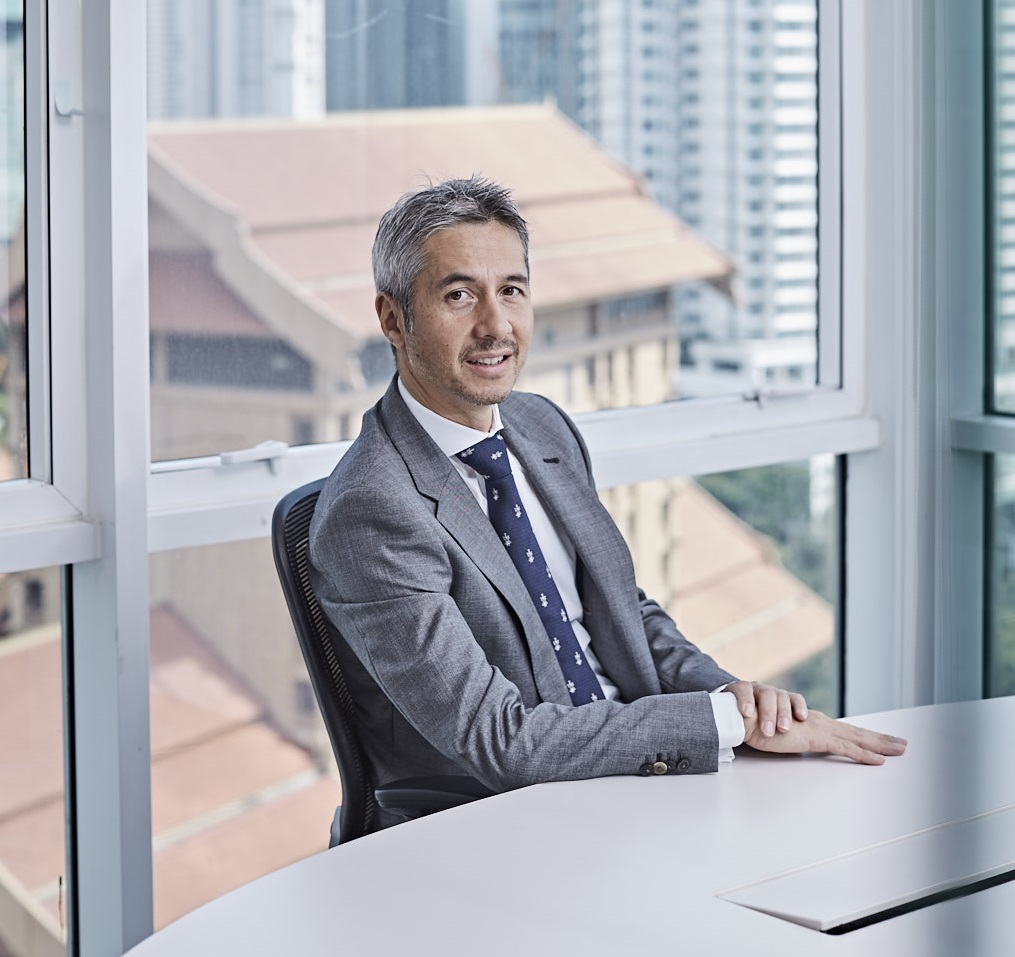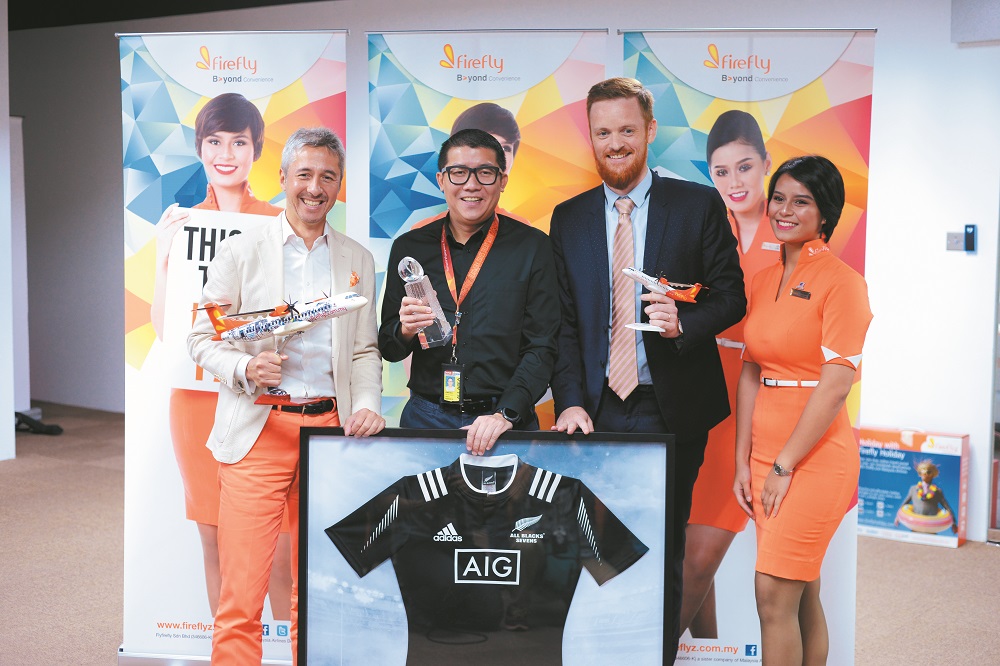
Antony Lee’s office — a clean, well-proportioned modern space that radiates with natural light — offers a sweeping view of Kuala Lumpur city centre, overlooking its most famous architectural icon, the Petronas Twin Towers. A UK-trained architect who spent 10 years working in London before moving back to Malaysia, Lee has seen an out-of-the-ordinary career trajectory.
Slipping naturally into architectural lingo and discussing his past projects — spanning big infrastructure ones such as airports, hotels and hospitals to personal ones like his Damansara Heights residence — he cites functionality, creativity and the ability to challenge certain norms as the core of his design philosophy.
“I enjoyed architecture. Most people ‘fall’ into insurance, as opposed to choosing it as a profession, which is something we are trying to change,” he says. “I practised architecture for many years until my late father, who had started a company with American International Group (AIG) dealing in technology, passed away 17 years ago. That was when my wife — she was expecting our first child at the time — and I decided to come back.”
Lee was asked to assist in his late father’s joint venture for a year by the American executive who had just arrived in Malaysia to run it. He obliged and stayed on to work at the start-up of about 30 people, AIG’s first global services technology hub. Within seven to eight years, the headcount grew to more than 500.
In the wake of the 2008 global financial crisis, the entity had to be divested, in conjunction with AIG offering a sizeable stake in its main Asian unit, AIA, in a Hong Kong initial public offering to repay its multibillion US government bailout.
Lee was offered a Singapore-based position in insurance by AIG. He accepted and worked in the city state for 1½ years as regional vice-president of commercial and consumer businesses, Asia-Pacific, and concurrently attended an executive MBA course. He was subsequently transferred to run AIG Vietnam as CEO. Two years later, in October 2013, AIG Malaysia appointed Lee as CEO.

Leadership rules
When asked if his transition to insurance was a smooth process, he says, “It felt easy at the time, but every job has its difficulties. I like challenge and the idea of building something. Perhaps it is the architect in me, being used to dealing with concepts, design and clients, and in doing something that is more than just ordinary.”
He goes on to say that his architectural experience taught him the importance of articulating a vision. It also honed his ability to gather a diverse group of people — engineers, quantity surveyors, project managers and clients — and move them in a certain direction while ensuring budgets and timelines were adhered to. Being a leader also entails the ability to convince and motivate the team, as Lee learnt in his professional capacity.
“You have to do something that inspires people and leave some sort of a legacy. I have always applied those simple rules to everything I do. It’s all about people and I enjoy working with people.”
Lee says being in a leadership role requires vision to inspire and be a coach to a team. “This business is all about people. In everything I have done, it is important to get a good team of people together and making sure the chemistry works. At the end of the day, convincing people to work together solves a lot of issues. Ultimately, everyone feels a lot of pride when something is achieved.
You have to do something that inspires people and leave some sort of a legacy. I have always applied those simple rules to everything I do. It’s all about people and I enjoy working with people
“There is a solution to every problem. I have a positive mindset and I always see the glass as half full,” he says. “If you believe in something, even though it may take a few years to achieve, never give up. The minute you start to give up, you lose your purpose.”
Lee is emphatic that project management is key, whether in building structures or software, another principle culled from his experiences in architecture and technology.
“If you do not coordinate and something goes wrong on site, it is usually too late and will definitely add significant costs to make changes,” he says. “That’s why the planning is so important and you have to get that right. IT is similar, and discipline is a necessary ingredient in the building process. The worst thing you can do in projects is to allow clients to keep changing their minds, resulting in cost overruns. Of course, you have to understand what the client needs in the first place.”

Spirit of excellence
Now in his second term as chairman of the General Insurance Association of Malaysia (PIAM), after being reelected recently, Lee is tasked with driving the industry forward.
“My role is to establish and secure a positive image for the industry as a whole,” he says. One of the initiatives undertaken by PIAM was to visit its Portuguese counterpart to learn from its success. Through shortening the time frame of turning around motor claims, with a few years of hard work, the Portuguese association climbed from seventh position to third on the consumer satisfaction index, compared with different industries such as banking and telecommunications.
In leading by example, AIG Malaysia has continued to reinforce its commitment to excellence by consistently winning the Best Insurer Award — in 2011, 2012, 2013 and 2016 — for best turnaround time for motor claims.
“We are very lucky to have innovative people with a lot of industry experience,” Lee says, crediting his team. “In the end, the focus is always on the customer. You have to put yourself in their shoes. Many of them are making claims for the first time and are anxious about how it is going to work. Our target is to process the claims [so they can be] paid as quickly as possible.”
If you believe in something, even though it may take a few years to achieve, never give up. The minute you start to give up, you lose your purpose
When he first joined the PIAM committee, he was put in charge of human capital. Even though “insurance is a great industry”, according to Lee, he noticed that it had difficulty in attracting talent.
“Through the association, I created an internship programme and so far, we’ve welcomed 200 entrants, in batches of four or five a year, for the whole industry. AIG takes them in as well,” he says. “Certainly, there is more awareness now in universities with respect to careers in insurance and there has also been a boost in the availability of jobs in the industry.”
On the corporate level, Lee has worked actively to enhance talent recruitment at AIG Malaysia through a graduate programme — part of a global system — that accepts four candidates annually. These recruits are given opportunities to travel to New York twice, where they meet with senior leadership, besides being given accelerated training on a six-month rotation basis in different departments.
Though Lee believes young graduates are the agents of change of the industry, he does not fail to commend long-service staff, some of whom have been with the company for 30 years, for their contributions. Reverting to the importance of planning, he cautions, “we need to anticipate the future and gear ourselves up to deal with it. In designing for the next generation, things are not going to work if they are not relevant to them”.
To meet the many changes the insurance industry will inevitably face, PIAM has had a CEO for the last two years. The association is also stepping up efforts to be more pro-active.
“There is a need for more education. The problem is, when you say the word ‘insurance’, everyone is lost. Insurance has to be made easier and simpler,” says Lee. “The ideal vision is that from the moment you are sleeping to the time you wake up and go out for your daily duties, should anything untoward happen, you have something to help you, with insurance. But we have a long way to go still.”
Art of innovation
The fact is, insurance penetration remains low in Malaysia and other countries in Asia-Pacific, and is trailing the region’s more developed nations.
“If you look at most developed countries, they all have much higher insurance penetration than Malaysia. Singapore’s numbers are at least double ours,” Lee says. “More people are travelling now. I always like to use the travel insurance example. For single-trip travellers, 15% will typically buy travel insurance in Malaysia, while 65% to 70% do so in Singapore.
“For the price of a Starbucks drink and snack, you can get travel insurance. But people choose not to buy. The reality is that if something happens during one’s travels, medical bills can run into thousands of ringgit. It’s a forced saving. We see all the claims, so everybody needs to be educated.”
Lee says that people buy motor insurance because it is compulsory. However, the public needs to be educated about many other types of insurance that are valuable. An example is cyber coverage that AIG Malaysia provides, having linked up with an IT security firm. It is the first of its kind in the industry.
“Technology is disrupting insurance in a positive way, and people’s needs are changing,” he says. “We have data analysts in the digital space as well as more developments online, together with agents who are embracing digitalisation.”
As such, Lee is encouraging innovative partnerships by linking up with various parties, such as airlines and online retailers, to make the purchasing of insurance more convenient as well as to educate the public. “We have just launched a partnership with Lazada,” he highlights.
By investing in the digital and mobile space, as well as maintaining agents as a vital channel, Lee is ensuring these multiple distribution channels will continue to make AIG Malaysia accessible to the public. “Essentially, we are creating new products, and should something happen, there is a pool of support to save people in a predicament.”
Insurance cushions one from additional worries should one incur financial and other losses as a result of an unfortunate incident or accident.

Age of liberalisation
A recent development in the motor insurance segment is generating a lot of buzz, Lee says.
“We have this phased liberalisation in motor insurance, which used to be tariff-based with similar premiums at different insurers,” says Lee.
“The first phase came into effect on July 1. It is part of Bank Negara Malaysia’s liberalisation framework that will reduce insurance tariffs gradually, leading to a free market.”
What it means is that drivers with a history of accidents and claims will have to pay higher premiums for their motor insurance, whereas safe, careful drivers can expect lower premiums.
“Essentially, the ‘bad’ drivers are being subsidised by the ‘good’ drivers under the tariff system, which is not fair. The good news is, there will be more fair pricing for motor insurance now as it is based on risk rather than a standard price for all,” Lee says.
Finally, factors such as one’s gender, age, occupation, where you park and live, driving behaviour, type of vehicle and so on would also determine premiums. Lee says the reason for phasing in the implementation of liberalisation is to mitigate the risk of it failing, as happened in China and India. In the rush to capture market share, premiums were drastically reduced, which ultimately rendered the free insurance market unsustainable in those countries, causing the tariff system to be reinstated.
“PIAM has been working closely with Bank Negara to give consumers time and space to learn about how liberalised motor insurance works,” says Lee. “The phase which started on July 1 allows pricing variability with limits. What you will get is that probably at least half the number of Malaysian drivers will see a decrease in their premiums, while the rest will see an increase. With the premium variability, consumers can decide on coverage for additional things, like floods.”
Lee says it may take a cycle, or a year, until everyone has experienced the new system to enable Bank Negara to make an assessment before it introduces full de-tarification. “That is the right and responsible way. Bank Negara is keeping an eye out to ensure consumer needs are being addressed and balancing that with what the insurers are doing.”
The right legacy
“AIG is known for being the grandfather of insurance and has been around forever,” Lee says, though just under a decade ago, AIG Inc was almost engulfed by the 2008 global crisis.
“We survived and continued doing what we were doing. It shows the resilience of the people who got us through the whole thing. The fact is that AIG is such an important component of the economy and, therefore, it was essential that it continued what it was doing. The interesting part was that we hardly lost any clients in the process.”
Lee says what sets AIG apart is its focus on customers, to give them the best in service, additional value and innovations. AIG has roots that date back almost 100 years, to when American Cornelius Vander Starr started a general insurance agency in Shanghai, China, in 1919. Even after its massive restructuring in the last decade, it remains the largest commercial insurer in the US and Canada, according to Reuters. AIG has had a presence in Malaysia for around 60 years, with consumer insurance making up 65% of its business and commercial insurance 35%. Its biggest market segment is motor coverage, with other consumer insurance categories such as travel, home, extended warranty and snatch theft, as well as personal and group schemes for corporates. Its commercial side covers liability in property and industries such as oil and gas, aviation and finance.
Much like the legacy of the AIG name, Lee’s own family name is written in the annals of the country. His grandfather, Tun H S Lee, needs no introduction for anyone schooled in Malaysian history. He was a politician and businessman who served as the first finance minister of the Federation of Malaya, co-founded the Malaysian Chinese Association and was a member of the Merdeka mission to London. His father, Tan Sri Alex Lee, was also a renowned politician and tireless patron of sports.
Lee shares intimate stories of his family, saying “his grandfather was an amazing figure”. Though he was very formal with family members, he was extremely diligent, disciplined, good at keeping the big family together and a great networker. Lee recalls joyful family reunions in Cameron Highlands every year.
His father, on the other hand, was more informal and enjoyed sitting down with people and chatting freely. He worked with Lee’s grandfather at the family’s D&C Bank, which is now defunct, having merged with others in the consolidation of the banking industry. “My father worked at the bank for a while. He was a lawyer first before joining the bank and becoming a politician. He had done everything and had a open mind and style and was a good networker as well,” Lee reminisces.
One of his fondest memories was a trip with his father while the latter was working in sports administration that took them to 20 countries in 30 days to bid for the Commonwealth Games. He proudly remembers his father selling Malaysia as host of the games. Malaysia won the bid for the 1998 Games.
Lee jokes that he has “large shoes to fill that cannot be filled”, with such an illustrious lineage. Though he might have had political aspirations before, now, as CEO of a financial institution, a career in politics would be disallowed by Bank Negara.
“I have an important mission in terms of insurance with respect to education, creating awareness and the rest of it,” Lee says. Going forward, he believes Malaysia still has a very bright future and its people need to be stronger in their beliefs to maintain unity. Undoubtedly forging his own path of leadership in the insurance industry, Lee is steadily writing a unique legacy of his own in his chosen field.
---
This cover story appeared in the Oct 2, 2017 issue of The Edge Malaysia. Save by subscribing to us for your print and/or digital copy.


